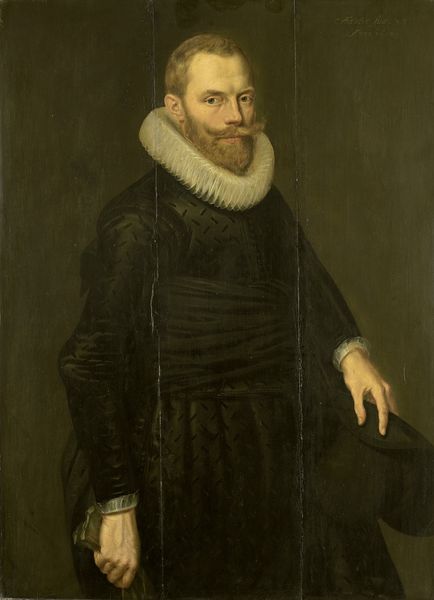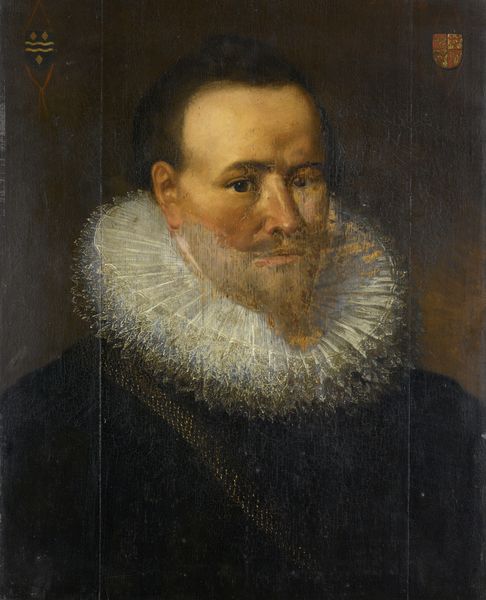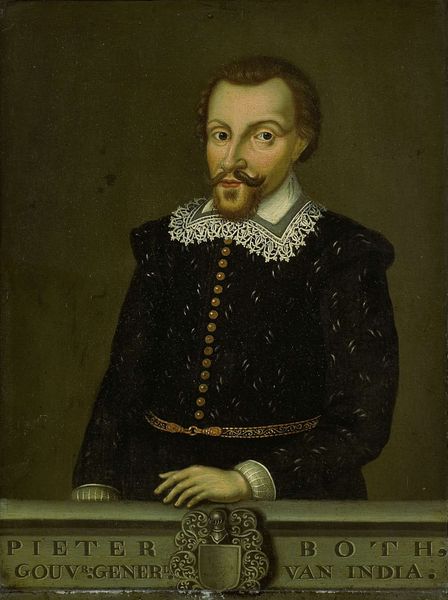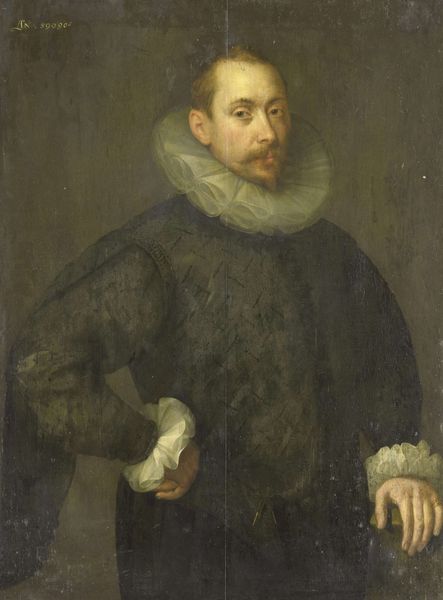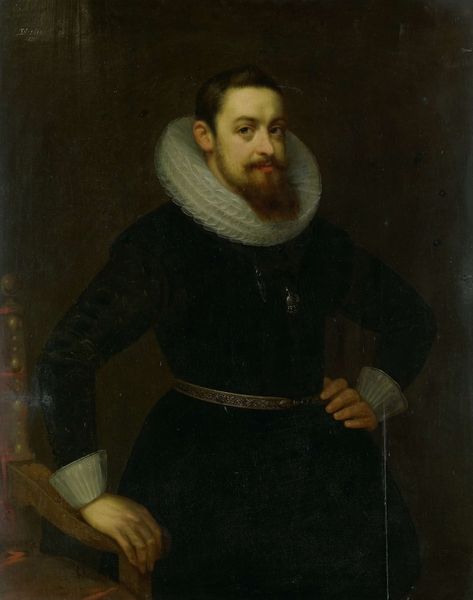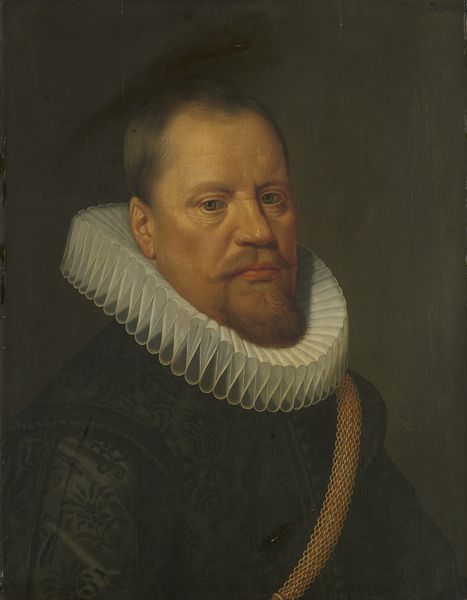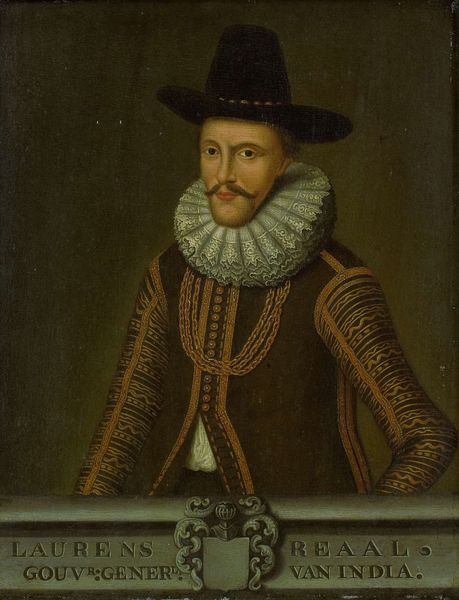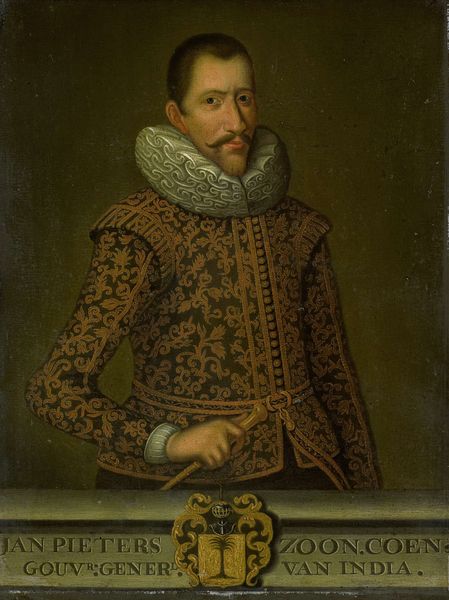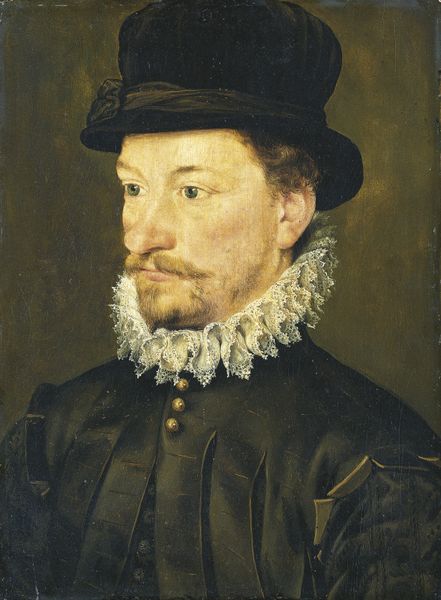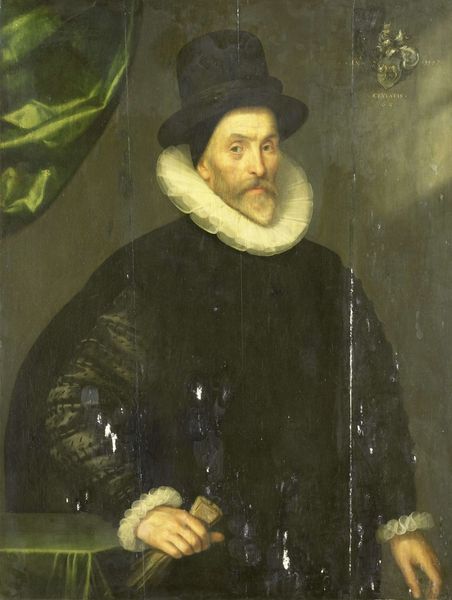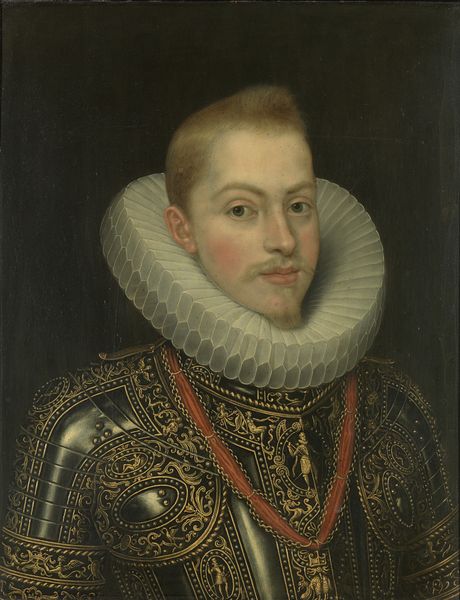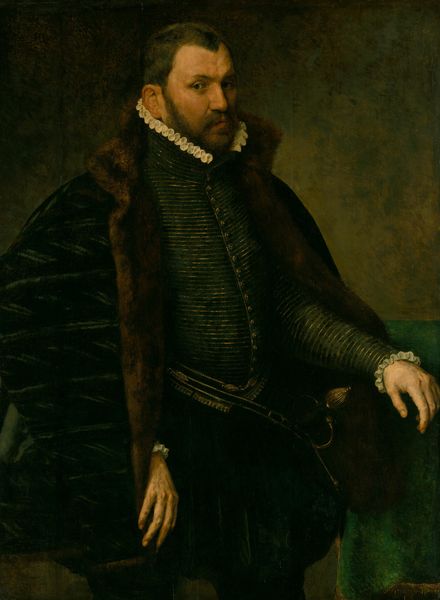
painting, oil-paint
#
portrait
#
self-portrait
#
painting
#
oil-paint
#
11_renaissance
#
13_16th-century
#
history-painting
#
academic-art
#
italian-renaissance
#
portrait art
Dimensions: 60.0 x 48.9 x min. 0.4 cm
Copyright: Public Domain
Editor: This is "Portrait of Johann Philipp Völcker," painted in 1588 by an anonymous artist. It's an oil painting, and immediately strikes me as a portrait meant to convey a certain status. What are your thoughts on its historical context and function? Curator: You're right, these portraits were crucial tools in shaping public perception and cementing social hierarchies in the 16th century. Notice his attire, particularly the meticulously rendered ruff, and the prominent rings—they’re loud declarations of wealth and status. But consider also what the artist *chooses* to include. The sword is not only part of the dressing, but a visible representation of authority and privilege. How might such imagery have functioned within the complex social tapestry of the Renaissance? Editor: It seems like the artist really emphasized details like those to make sure the message got across, even through centuries. Curator: Precisely! These weren't merely aesthetic choices. They were carefully constructed statements embedded within specific social codes. And this was meant for consumption beyond just him, perhaps a message for others who held power or those aspiring towards it. The placement of this portrait – was it in a public area of his house, a private study, meant to convey status or a more intimate persona? What do you think is the intended message this portrait tries to transmit? Editor: That’s something I didn't consider, about the display of these portraits. I'd guess that it would've been in an area to garner the most attention. Like a silent claim on territory. Curator: Absolutely. Think of it as carefully crafted social messaging – what narratives are these choices subtly reinforcing? How do portraits like this bolster certain power structures and marginalize others? Editor: I never looked at these portraits beyond the aesthetic and individual level. The fact that all this was deliberately staged really sheds new light on how to view portraits in general. Thanks! Curator: Indeed. Now you can see that a painting is much more than paint on canvas. It is also an object operating in a historical and social world, shaping perception.
Comments
No comments
Be the first to comment and join the conversation on the ultimate creative platform.
